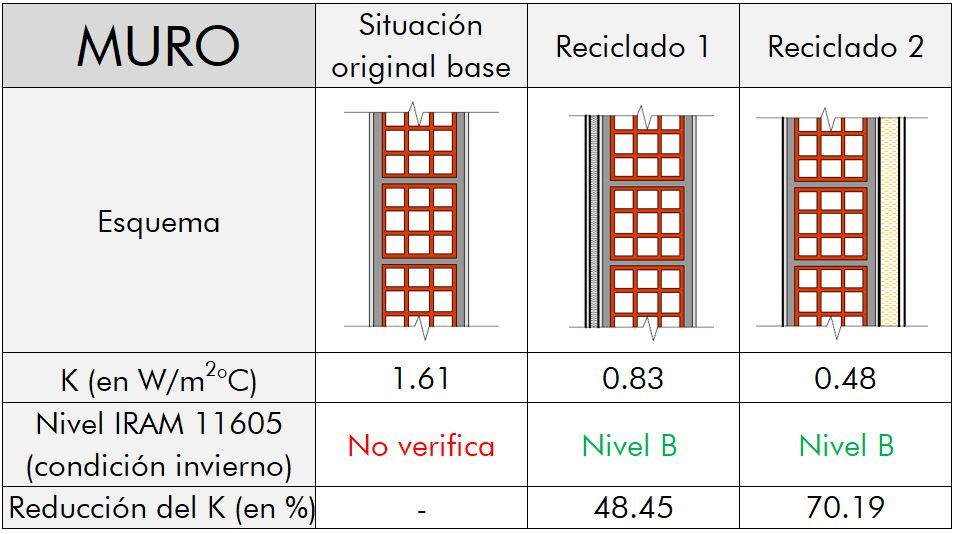Use of association rules to determine technological-constructive solutions for the improvement of energy efficiency in healthcare buildings
DOI:
https://doi.org/10.18861/ania.2023.13.2.3484Keywords:
urban planning, health sector, building envelope, building recycling, energy saving, energy efficiency, data mining, building technology strategiesAbstract
In the year 2022, in Argentina, the energy consumption of the building stock of the Residential and Commercial-Public Sectors exceeded 34 % and a significant part of this consumption is due to air conditioning requirements. In turn, the air conditioning demands are affected by the energy efficiency of the building envelope, since it is through it that the heat exchange between the interior of the building and its surroundings takes place. This work presents the application of a data mining method, the association rules, to discover the most representative technological-constructive solutions present in the building envelope, in this case, corresponding to buildings intended for health (Commercial-Public Sector). To do so, it is necessary to identify the different technological-constructive solutions present in the building envelope (walls, windows and ceilings) in the different buildings. With such data as input, the algorithm produces as results sets of combinations of envelope elements that appear frequently associated. From these results, it is expected to improve the energy efficiency of the most representative building envelopes by suggesting specific measures for each set found, thus facilitating their implementation on a massive scale.
Downloads
References
AGRAWAL, R., IMIELINSKI, T. y SWAMI, A. (1993). Mining association rules between sets of items in large databases. Proc. 1993 ACM-SIGMOD International Conference Management of Data, pp. 207-216, Washington, D. C. Recuperado de https://doi.org/10.1145/170036.170072
AMAT RODRIGO, J. (2018). Reglas de asociación y algoritmo Apriori con R. Cienciadatos, Github. Recuperado de https://www.cienciadedatos.net/documentos/43_reglas_de_asociacion#Bibliograf%C3%ADa
BÁEZ ACUÑA, J. M., PAREDES CABAÑAS, C. A., SOSA CABRERA, G. y GARCÍA, M. E. (2018). Descubriendo reglas de asociación en bases de datos del sector retail usando R. XV Workshop Bases de Datos y Minería de Datos (WBDDM). XXIV Congreso Argentino de Ciencias de la Computación. La Plata, Argentina. Recuperado de http://sedici.unlp.edu.ar/handle/10915/73220
BAWANEH, K., NEZAMI, F. G., RASHEDUZZAMAN, M. y DEKEN, B. (2019). Energy Consumption Analysis and Characterization of Healthcare Facilities in the United States. Energies. Vol. 12. Issue 19. Recuperado de https://doi.org/10.3390/en12193775
CELIS, F., ECHEVERRÍA, E., DA CASA, F., CHÍAS, P. y DOMÍNGUEZ, P. (2019). Eficiencia energética y arquitectura hospitalaria en España. III Encuentro Latinoamericano y Europeo Sobre Edificaciones y Comunidades Sostenibles. Recuperado de https://ebuah.uah.es/dspace/handle/10017/38635
DISCOLI, C. A., MARTINI, I. y BARBERO, D. A. (2021). Quality of Life in Relation to Urban Areas and Sustainability. Application Case: City of La Plata, Buenos Aires, Argentina (pp. 353–370). Recuperado de https://doi.org/10.1007/978-3-030-50540-0_18
FONDOSO OSSOLA, S. T., CHÉVEZ P. J. y MARTINI I. (2022). Construcción del año base para el subsector salud. XII Congreso Regional de Tecnología en Arquitectura. Recuperado de http://sedici.unlp.edu.ar/handle/10915/144600
HERNÁNDEZ ORALLO, J., RAMÍREZ QUINTANA, M. J. y FERRI RAMÍREZ, C. (2004). Introducción a la minería de datos. Person-Prentice Hall.
INSTITUTO ARGENTINO DE NORMALIZACIÓN Y CERTIFICACIÓN. (1996). Acondicionamiento térmico de edificios. Condiciones de habitabilidad en edificios. Valores máximos de transmitancia térmica en cerramientos opacos (IRAM 11605: 1996).
INSTITUTO ARGENTINO DE NORMALIZACIÓN Y CERTIFICACIÓN. (2010). Carpintería de obra y fachadas integrales livianas. Ventanas exteriores. Parte 4 – Requisitos complementarios. Aislación térmica (IRAM 11507-4:2010).
MALBERTI RIBEROS, M. A. y KLENZI, R. O. (2015). Rules of association in the computation of book use in a university library. Enfoque UTE. Vol. 6. Nro. 2. Recuperado de https://doi.org/10.29019/enfoqueute.v6n2.62
MINISTERIO DE ECONOMÍA. (2022). Balance Energético Nacional 2022. URL: https://www.argentina.gob.ar/econom%C3%ADa/energ%C3%ADa/planeamiento-energetico/balances-energeticos. Accedido: 16-8-2023.
PÉREZ GÓMEZ, R. (2020). Generación de reglas de asociación para productos de retail utilizando el algoritmo FP-Growth paralelo. Actas del Congreso Internacional de Ingeniería de Sistemas 2019: Innovando la educación en tecnología. Recuperado de https://hdl.handle.net/20.500.12724/11159
SÁENZ LÓPEZ, A., CORTÉS MARTÍNEZ, F. y BETANCOURT CHÁVEZ, J. R. (2017). Reglas de asociación en una Base de datos del área médica. Revista Arquitectura e Ingeniería. Vol. 11. Nro. 2. Recuperado de https://www.redalyc.org/journal/1939/193954081005/html/
URTENECHE, E., BARBERO, D. A., FONDOSO OSSOLA, S. T. y MARTINI, I. (2022). Clasificación de establecimientos de salud a partir de características técnico-constructivas de la envolvente edilicia para fundamentar medidas de eficiencia energética. XLIV Reunión de la Asociación Argentina de Energías Renovables y Ambiente.
WITTEN, I. H., FRANK, E., HALL, M. A. y PAL, C. J. (2017). Data mining. Practical machine learning tools and techniques. Fourth edition. Morgan Kaufmann.
YE, N. (2014). Data mining. Theories, algorithms and examples. CRC Press. Recuperado de https://doc.lagout.org/Others/Data%20Mining/Data%20Mining_%20Theories%2C%20Algorithms%2C%20and%20Examples%20%5BYe%202013-07-26%5D.pdf

Published
How to Cite
Issue
Section
License
Copyright (c) 2023 Emilia Urteneche, Dante Andrés Barbero, Irene Martini

This work is licensed under a Creative Commons Attribution 4.0 International License.
The journal and its contents are licensed under the Creative Commons - Attribution 4.0 International License (CC BY 4.0). It is possible to copy, communicate and publicly distribute its content as long as the individual authors and the name of this publication are cited, as well as the publishing institution (Universidad ORT Uruguay).

